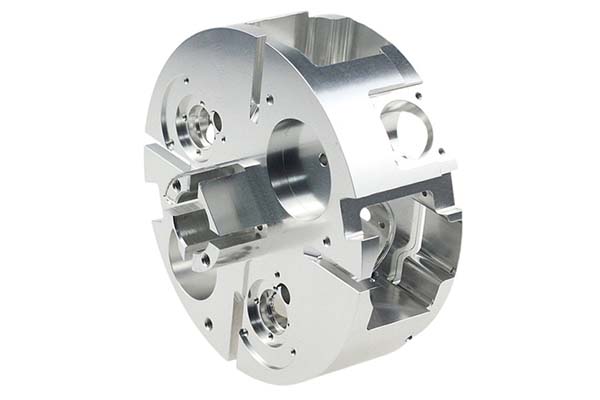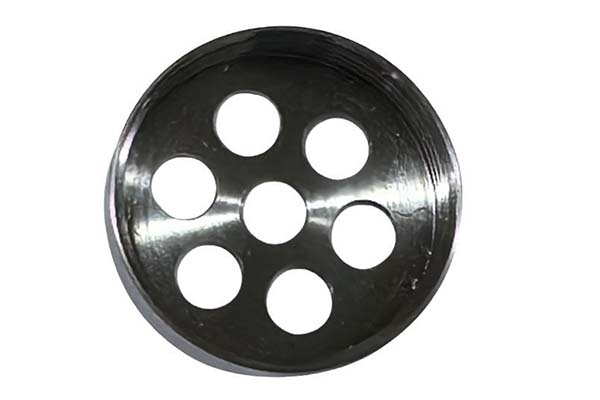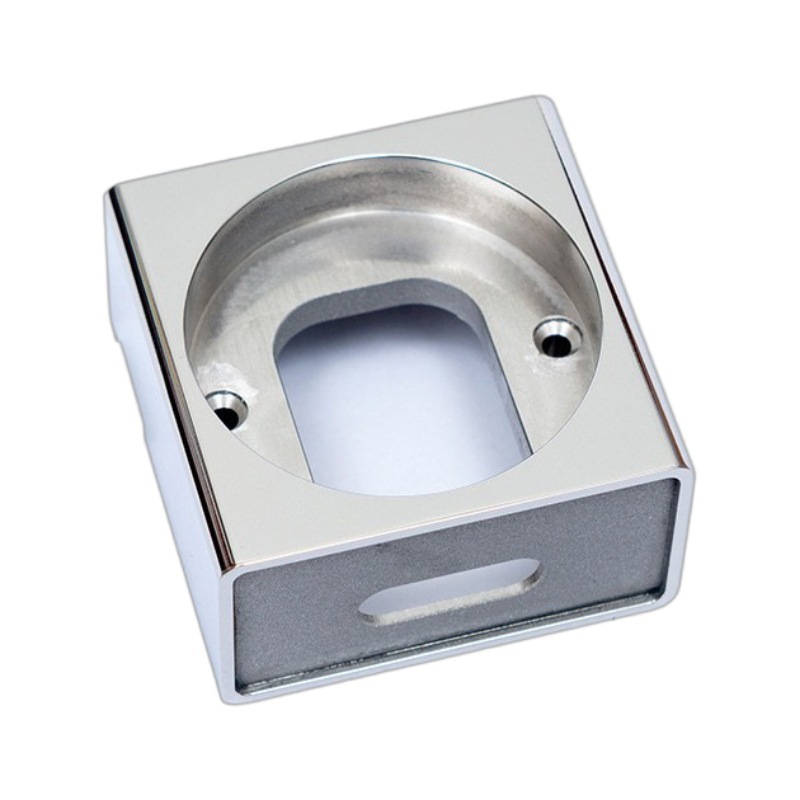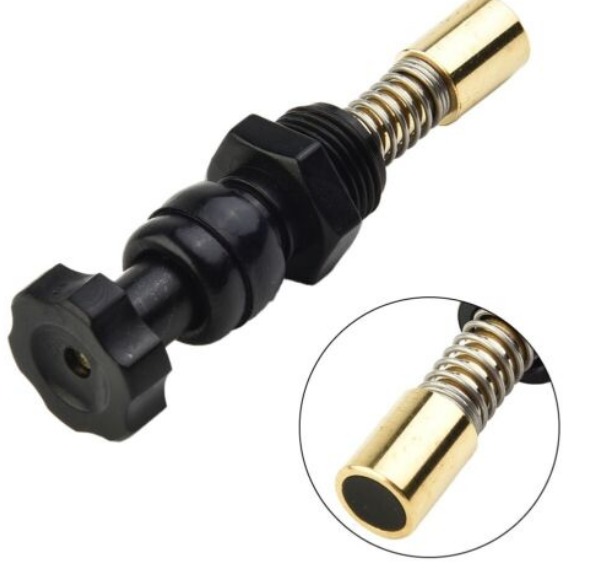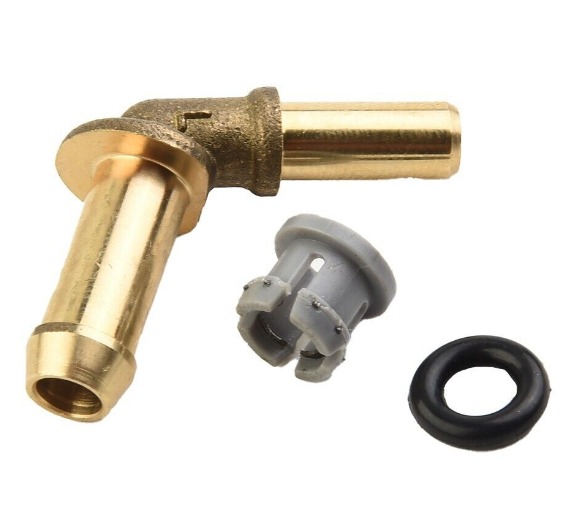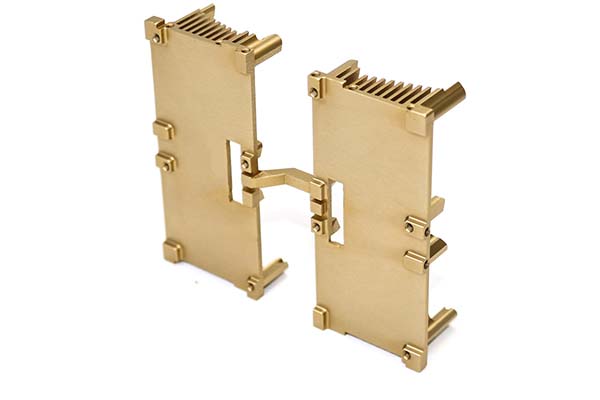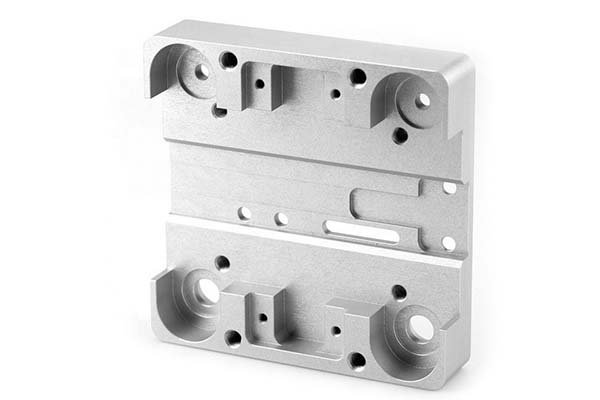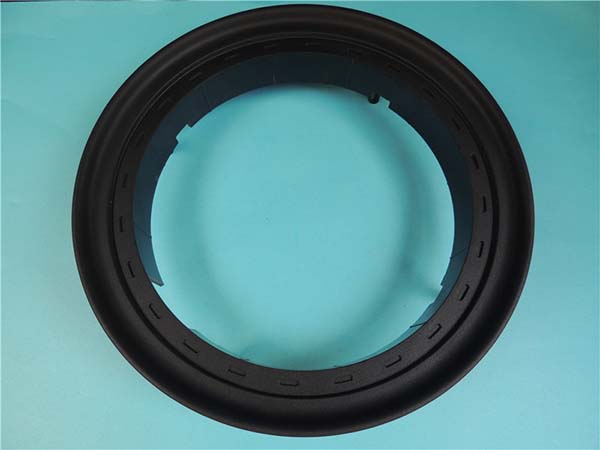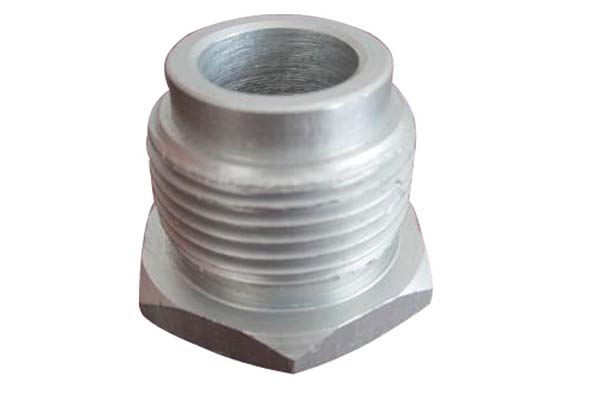Manufacturers seeking a blend of hardness, wear resistance, and corrosion performance often turn to SS440A stainless steel, SS440B stainless steel, and SS440C stainless steel. As martensitic stainless steel grades, they offer exceptional hardness after heat treatment, but machining them presents unique challenges. Their high carbon content enhances strength but makes them significantly harder than austenitic grades, leading to rapid tool wear. Additionally, their magnetic properties and varying carbon levels (which affect hardness and machinability) demand careful material selection and process control. Distinguishing between SS440A, B, and C—especially in applications requiring specific hardness ranges—requires clear material knowledge. This guide addresses these pain points, offering proven strategies to optimize CNC machining SS440A/B/C for efficiency, quality, and reliability in high-wear environments.
Material Overview of SS440A/B/C
SS440A stainless steel, SS440B stainless steel, and SS440C stainless steel are martensitic alloys distinguished by their carbon content, which directly impacts their properties:
- Mechanical properties: Tensile strength ranges from 760 MPa (SS440A) to 895 MPa (SS440C), with hardness increasing with carbon content—from 25-35 HRC (annealed) to 55-60 HRC (heat-treated) for SS440C.
- Corrosion resistance: Good in mild environments (air, water) due to 16-18% chromium content, though lower than austenitic grades like SS316. SS440A offers the best corrosion resistance of the three, while SS440C prioritizes hardness over corrosion performance.
- Hardness: Varies by grade after heat treatment: SS440A (50-55 HRC), SS440B (53-58 HRC), SS440C (55-60 HRC)—making them ideal for high-wear applications.
- High carbon content: 0.6-0.75% (SS440A), 0.75-0.95% (SS440B), 0.95-1.2% (SS440C)—the primary driver of hardness and wear resistance, but a challenge for machining.
- Magnetic properties: Strongly magnetic in all conditions, unlike austenitic stainless steels—useful for applications requiring magnetic responsiveness.
- Heat treatability: Excellent, with martensitic transformation enabling significant hardness increases through quenching and tempering—critical for achieving their full performance potential.
- Chemical composition: All contain 16-18% chromium; the key difference is carbon content, with trace amounts of manganese and silicon in each grade.
These properties make SS440A/B/C ideal for cutting tools, bearings, and other components where wear resistance is paramount.
CNC Machining Processes for SS440A/B/C
Core Machining Operations
CNC machining SS440A/B/C requires precision to manage their high hardness, with processes typically performed in the annealed state (25-35 HRC) for better workability:
- CNC milling: Effective for shaping components like knife blades and industrial cutters. Low cutting speeds and light depths of cut are critical to avoid tool damage.
- CNC turning: Suitable for cylindrical parts such as bearing races, with slow feed rates to minimize tool deflection in hard material.
- CNC drilling and CNC boring: Challenging due to high hardness; sharp tools and peck drilling (intermittent 进给) help manage heat and chip evacuation.
- Machining centers and multi-axis machining: Enhance efficiency for complex parts like surgical instruments, ensuring dimensional consistency before heat treatment (which can cause slight distortion).
- Laser cutting: Useful for thin sheets (≤3 mm) in the annealed state, though CNC machining remains superior for tight-tolerance features.
Optimal Cutting Parameters
| Operation | Cutting Speed (m/min) | Feed Rate (mm/rev) | Depth of Cut (mm) |
| CNC milling (carbide) | 40-80 | 0.05-0.15 | 0.5-2 |
| CNC turning (carbide) | 50-100 | 0.08-0.15 | 1-3 |
| CNC drilling (carbide) | 30-60 | 0.05-0.1 | 0.5-2 |
These parameters reflect the challenges of machining hard materials: cutting speeds are 50-60% lower than for austenitic grades. SS440C, with the highest carbon content, requires the slowest speeds to minimize tool wear, while SS440A (softer) allows slightly faster machining.
Tool Selection and Tooling for SS440A/B/C
Choosing the Right Tools
Tool selection for CNC machining SS440A/B/C focuses on withstanding high hardness and reducing wear:
- Cutting tools: Carbide tools are essential; ultra-hard grades (e.g., WC-Co with 10-12% Co) or cermet tools offer the best wear resistance. High-speed steel tools are only viable for low-volume runs on annealed SS440A.
- Tool coatings: AlTiN coatings perform best, extending tool life by 50-70% compared to uncoated carbide due to their high hardness (3500 HV) and heat resistance. TiAlN coatings are a cost-effective alternative for moderate speeds.
- Tool geometry: Negative rake angles (0 to -5°) improve edge strength, while thick inserts (≥3 mm) resist chipping. Sharp edges for cutting are critical but must be balanced with edge toughness to avoid breakage.
- Tool holders: Rigid, heavy-duty holders (e.g., hydraulic or shrink-fit) minimize tool deflection, which is especially problematic in hard materials where even slight deflection can cause tool chipping.
- Coolant delivery systems: High-pressure coolant (70-150 bar) delivered directly to the cutting zone reduces heat buildup and flushes chips, preventing re-cutting and tool overheating.
Chip Control Strategies
Poor chip control in SS440A/B/C can lead to tool damage and surface defects. Effective strategies include:
- Using tools with aggressive chip breakers designed for hard materials, especially in turning operations.
- Implementing peck drilling for deep holes to clear chips after each pass, preventing chip packing and tool binding.
- Adjusting feed rates to promote short, fragmented chips—avoiding long, stringy chips that can damage tools or scratch surfaces.
Surface Finish and Quality Control
Achieving Desired Surface Characteristics
SS440A/B/C’s surface finish is critical for both wear performance and corrosion resistance, as rough surfaces can accelerate wear and pitting:
- Surface roughness: Achievable Ra values range from 0.8 μm (finish machining) to 3.2 μm (roughing) in the annealed state. After heat treatment, grinding can achieve Ra ≤ 0.4 μm for bearing surfaces or cutting edges.
- Surface finish requirements: Cutting tools often require Ra ≤ 0.8 μm to ensure clean cutting action, while bearing components may need Ra ≤ 0.4 μm to minimize friction and wear.
- Finishing processes: Polishing enhances wear resistance by reducing surface defects, while electrochemical finishing can improve corrosion resistance by removing micro-burrs.
Quality Control Measures
- Inspection methods: Coordinate Measuring Machines (CMM) verify dimensional accuracy before heat treatment (since hardness prevents post-heat-treatment machining). Hardness testing (Rockwell C scale) ensures heat-treated parts meet specifications (e.g., 55-60 HRC for SS440C).
- Quality control standards: Compliance with ASTM A276 (bars) and ISO 9001 ensures consistent material properties and machining quality.
- Surface defects to monitor: Tool marks and burrs in machined parts can act as stress risers, reducing fatigue life. Grinding after heat treatment removes these defects, ensuring optimal performance.
Heat Treatment and Post-Machining Processes
Heat Treatment for SS440A/B/C
Heat treatment is critical for unlocking the full hardness of SS440A/B/C, with processes tailored to each grade:
- Hardening: Heating to 1010-1070°C (depending on grade), followed by oil quenching to form martensite. SS440C requires higher temperatures (1050-1070°C) to dissolve more carbon.
- Tempering: Heating to 150-300°C to reduce brittleness while retaining hardness. Lower temperatures (150-200°C) maximize hardness, while higher temperatures (250-300°C) improve toughness for applications like knife blades.
- Annealing: Heating to 815-900°C, followed by slow cooling, softens the material (to 25-35 HRC) for machining—typically performed before any machining operations.
Post-Machining Processes
- Post-machining cleaning: Ultrasonic cleaning removes coolant residues and chips, preventing contamination that could affect heat treatment uniformity.
- Passivation: A nitric acid treatment enhances corrosion resistance by restoring the chromium oxide layer, though its effectiveness is limited compared to austenitic grades due to lower chromium content.
- Surface hardening: Optional carburizing can further increase surface hardness (up to 62 HRC) for extreme wear applications, though this may reduce corrosion resistance.
Applications of SS440A/B/C Machined Parts
SS440A/B/C’s unique combination of hardness, wear resistance, and corrosion performance makes them ideal for high-wear applications:
- Cutting tools: Blades, drills, and milling cutters—SS440C’s high hardness (55-60 HRC) ensures long service life.
- Knife blades: Kitchen and industrial knives—SS440A offers a balance of corrosion resistance and hardness, while SS440C is preferred for high-end, heavy-use blades.
- Surgical instruments: Scalpels and forceps—SS440B’s mid-range hardness (53-58 HRC) provides durability and ease of sterilization.
- Industrial blades: Paper-cutting and textile-cutting blades—resisting wear in continuous operation.
- Mechanical components: Bearings, valve seats, and bushings—SS440C’s wear resistance reduces maintenance needs in high-friction applications.
In bearing manufacturing, for example, SS440C outlasts austenitic grades by 3-5x in high-load applications due to its superior hardness and wear resistance.
Technical Specifications and Standards
Adhering to industry standards ensures SS440A/B/C parts meet hardness and performance requirements:
- ASTM standards: ASTM A276 (bars) and ASTM A681 (seamless tubing) define material properties, including hardness and chemical composition.
- ISO standards: ISO 4955 specifies technical delivery conditions for martensitic stainless steels, including SS440A/B/C.
- Machining tolerances: Achievable tolerances of ±0.02 mm for small parts and ±0.05 mm for large components in the annealed state, with tighter tolerances (±0.01 mm) possible via post-heat-treatment grinding.
- Quality certifications: Compliance with ISO 9001 and ASME BPVC (for industrial components) ensures suitability for critical applications.
Challenges and Solutions in Machining SS440A/B/C
Overcoming Key Machining Challenges
CNC machining SS440A/B/C presents several challenges, but targeted solutions yield reliable results:
- High cutting forces: Their high hardness (even in the annealed state) requires 2-3x higher cutting forces than austenitic grades. Using rigid machine tools with high torque spindles (≥40 Nm) reduces deflection and ensures dimensional accuracy.
- Tool wear: Rapid wear is common due to high hardness. AlTiN-coated carbide tools last 50-70% longer than uncoated tools, while ceramic tools (for finishing) offer even better wear resistance but are more brittle.
- Work hardening: Moderate compared to austenitic grades but still a concern. Using sharp tools and avoiding excessive depth of cut minimizes work hardening, which can increase hardness by 5-10 HRC in localized areas.
- Heat generation: Friction-induced heat is significant, leading to tool softening. High-pressure coolant (100-150 bar) and intermittent cutting cycles prevent tool overheating and maintain edge integrity.
- Vibration: More pronounced than in softer materials, causing poor surface finish and tool chipping. Using heavy-duty fixturing and balanced toolholders reduces vibration, ensuring stable cutting.
Cost and Efficiency Considerations
Balancing Performance and Cost
CNC machining SS440A/B/C is more expensive than machining austenitic grades, but strategic choices optimize efficiency for their specialized applications:
- Machining cost: 50-70% higher than SS304 due to slower cutting speeds, increased tool wear, and the need for heat treatment. This premium is justified by 3-5x longer service life in high-wear applications.
- Tool cost: Carbide tools are essential, with AlTiN-coated varieties costing 2-3x more than uncoated carbide but reducing replacement frequency by 50-70%.
- Production rate: Typical rates of 5-15 parts per hour for small components, 30-50% of SS304’s rate but necessary for achieving high hardness and wear resistance.
- Efficiency improvements: Pre-annealing (to soften material) and high-speed machining centers with rigid frames reduce cycle times by 15-20% compared to standard machines.
Comparison with Other Materials
How do SS440A/B/C compare to similar hard materials?
| Material | Hardness (HRC) | Wear Resistance | Corrosion Resistance | Machinability (Relative) | Cost (Relative) |
| SS440A | 50-55 | Good | Good | Fair (50%) | High |
| SS440B | 53-58 | Very Good | Moderate | Fair (45%) | High |
| SS440C | 55-60 | Excellent | Moderate | Poor (40%) | High |
| SS304 | 18-22 | Poor | Excellent | Good (85%) | Medium-High |
| Tool Steel D2 | 58-62 | Excellent | Poor | Poor (30%) | High |
| Titanium Ti-6Al-4V | 30-35 | Good | Excellent | Poor (45%) | Very High |
- SS440A/B/C vs. SS304: SS440 grades offer far better wear resistance (3-5x higher) but lower corrosion resistance and machinability. Choose SS440 for high-wear, mild-corrosion environments; SS304 for corrosive, low-wear applications.
- SS440A/B/C vs. Tool Steel D2: D2 offers slightly higher hardness but poorer corrosion resistance. SS440C is a better choice for applications requiring both wear resistance and mild corrosion protection (e.g., outdoor cutting tools).
- SS440A/B/C vs. Titanium: Titanium offers better corrosion resistance but lower hardness. SS440C is preferable for high-wear applications (e.g., bearings) where corrosion exposure is limited.
Yigu Technology’s Perspective
At Yigu Technology, we specialize in CNC machining SS440A/B/C for cutting tool, medical, and industrial clients. Our data shows that using AlTiN-coated carbide tools with high-pressure coolant (120 bar) reduces tool wear by 60% compared to standard setups, lowering per-part costs. We recommend machining in the annealed state (25-35 HRC) followed by heat treatment and finish grinding to achieve tight tolerances. For clients requiring specific hardness ranges, we provide material certification verifying carbon content and heat treatment results. Our quality control includes CMM inspection pre-heat treatment and hardness testing (Rockwell C) post-treatment, ensuring parts meet the strictest standards for high-wear performance.
FAQ
- What are the key differences between SS440A, SS440B, and SS440C?
The primary difference is carbon content: SS440A (0.6-0.75%), SS440B (0.75-0.95%), SS440C (0.95-1.2%). Higher carbon increases hardness (50-55 HRC for A, 55-60 HRC for C) and wear resistance but reduces machinability and corrosion resistance.
